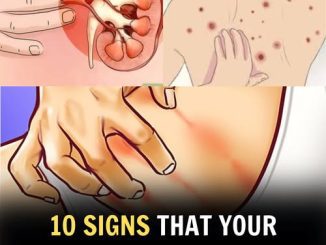Coronary artery disease (CAD) is the most common type of heart disease—and one of the leading causes of death globally. But here’s the thing: CAD often develops silently over years, slowly narrowing your arteries without you even knowing. Then one day, chest pain hits… or worse—a heart attack.
That’s why learning about coronary artery disease isn’t just for older folks or people already dealing with heart issues. It’s for everyone who wants to keep their heart strong and their life healthy.
Let’s break down what CAD really is, how it sneaks up on you, the symptoms you shouldn’t ignore, and what you can do right now to lower your risk.
How Coronary Artery Disease Develops

Coronary artery disease happens when the coronary arteries, which deliver oxygen-rich blood to your heart muscle, become narrowed or blocked. This narrowing is caused by a sticky substance called plaque—a mix of cholesterol, fat, calcium, and other stuff floating in your blood.
Over time, this plaque builds up in your artery walls, causing them to harden and narrow—a process called atherosclerosis. As the opening gets tighter, blood has a harder time flowing through, and your heart doesn’t get the oxygen it needs. That’s when the real problems begin.
What Happens When Blood Flow Is Blocked
Think of your heart as a car engine—it needs a constant supply of fuel (in this case, oxygen-rich blood) to run smoothly. When that fuel gets cut off or slowed down due to blocked arteries, the heart starts to struggle.
Even a partial blockage can lead to angina, which feels like pressure or tightness in your chest. A complete blockage? That’s a heart attack—when part of your heart muscle starts to die due to lack of oxygen. Over time, repeated poor blood flow can also weaken the heart, leading to heart failure.
Warning Signs You Should Never Ignore
Coronary artery disease doesn’t always shout for attention. Sometimes, it whispers. But your body often gives signals—if you’re paying attention.
Here are some symptoms that might indicate CAD:
- Chest pain or discomfort (angina): Pressure, squeezing, or aching—especially during physical activity or stress
- Pain in arms, back, neck, or jaw
- Shortness of breath
- Extreme fatigue or weakness
- Nausea or lightheadedness
- Sweating without a clear cause
Video : What Causes Heart Attack? | How to Keep Your Heart Healthy? | Heart Attack Signs and Symptoms
Not everyone has the “classic” heart symptoms. Women, in particular, might experience milder signs like indigestion or unusual fatigue. The bottom line? If something feels off, don’t shrug it off.
Who’s at Risk for Coronary Artery Disease?
While anyone can develop CAD, certain factors raise your risk significantly. Here are the most common culprits:
- High blood pressure: Puts extra strain on artery walls
- High cholesterol: Increases plaque buildup
- Smoking: Damages arteries and lowers oxygen in the blood
- Obesity: Makes your heart work harder and often accompanies other risk factors
- Diabetes: High blood sugar damages blood vessels
- Sedentary lifestyle: Lack of exercise weakens your heart and promotes plaque
- Family history: Genetics play a role
- Aging: Arteries naturally stiffen with age, increasing risk
Many of these risk factors are related to lifestyle—and that means you can do something about them.
How to Manage and Prevent Coronary Artery Disease
Good news: CAD doesn’t have to take over your life. In fact, many people manage it successfully for decades by making smart lifestyle choices and working with their doctors.
Here’s what that looks like in everyday life:
1. Eat a Heart-Friendly Diet
Skip the greasy takeout and load up on whole grains, lean proteins, fruits, and veggies. Reduce saturated fats, trans fats, and salt. Try the Mediterranean or DASH diet—both are proven to support heart health.

2. Move Your Body Daily
You don’t have to run marathons. A brisk 30-minute walk most days can improve circulation, lower blood pressure, and boost heart strength. Consistency matters more than intensity.
3. Quit Smoking—For Good
No other change benefits your heart as much as quitting smoking. Your heart starts healing almost immediately after you stop.
4. Manage Your Weight
Even modest weight loss (5–10% of your body weight) can improve cholesterol, blood pressure, and blood sugar levels.
5. Monitor Your Numbers
Keep tabs on your blood pressure, cholesterol, and blood sugar. These silent threats can often be managed with diet, exercise, and medication.
6. Take Medications as Prescribed
If your doctor recommends medication to lower cholesterol, control blood pressure, or prevent clotting, don’t skip doses. These drugs can literally be lifesavers.

7. Know When Procedures Are Needed
In some cases, lifestyle changes and meds aren’t enough. If your arteries are severely blocked, doctors may recommend procedures like:
- Angioplasty and stenting: A small balloon opens the artery and a stent keeps it open
- Bypass surgery: Blood is rerouted around a blocked artery using a vessel from another part of your body
These procedures restore blood flow and can dramatically reduce your risk of heart attacks and other complications.
A Stronger Heart Starts With Awareness
You don’t need to live in fear of coronary artery disease—but you do need to respect it. The more you know, the more you can do to protect your heart and live a full, vibrant life.
Video : Coronary Artery Disease (CAD): Signs, Causes, and Prevention
Start by paying attention to how your body feels. Don’t ignore pain or fatigue. Get your numbers checked regularly. Make those healthy lifestyle shifts—not all at once, but step by step. And if you have risk factors or a family history of CAD, talk to your doctor about prevention strategies now—not later.
Conclusion: Your Heart Deserves the Best
Coronary artery disease is serious—but it’s not unstoppable. With the right information, daily habits, and medical care, you can dramatically reduce your risk. Whether you’re managing CAD already or looking to prevent it, one thing is clear: your heart deserves attention, support, and care every single day.
So take a deep breath, check in with yourself, and start today—because your heart is counting on you.


